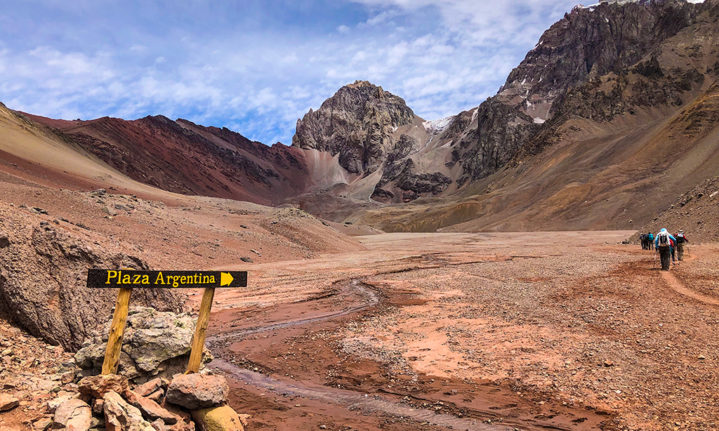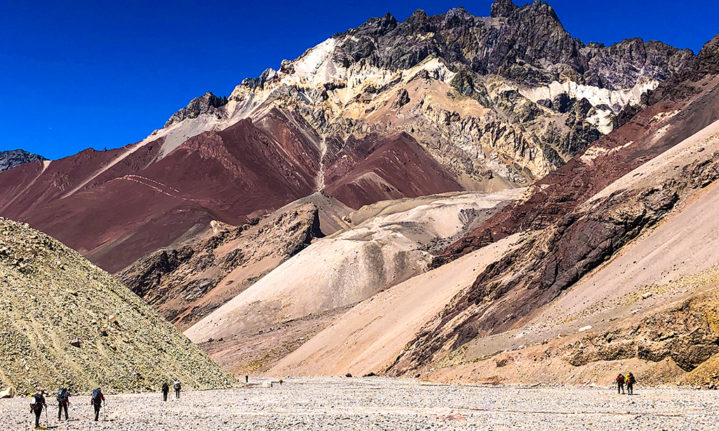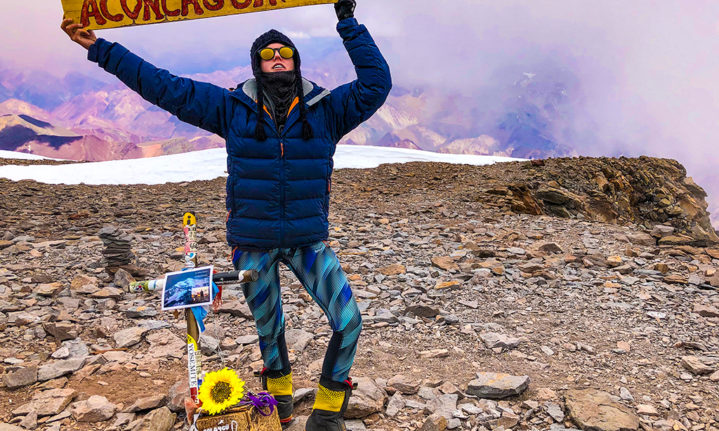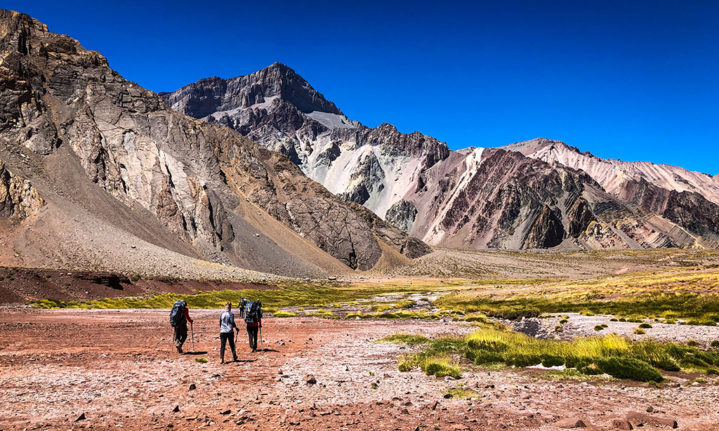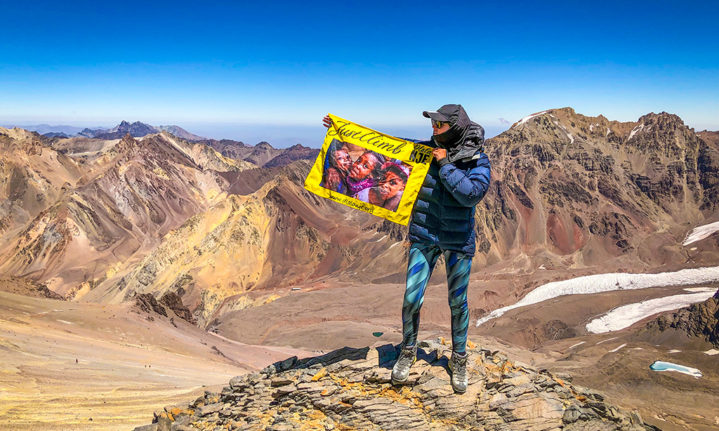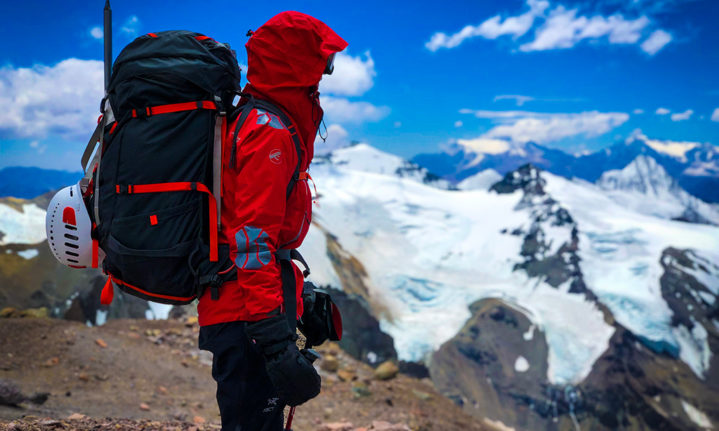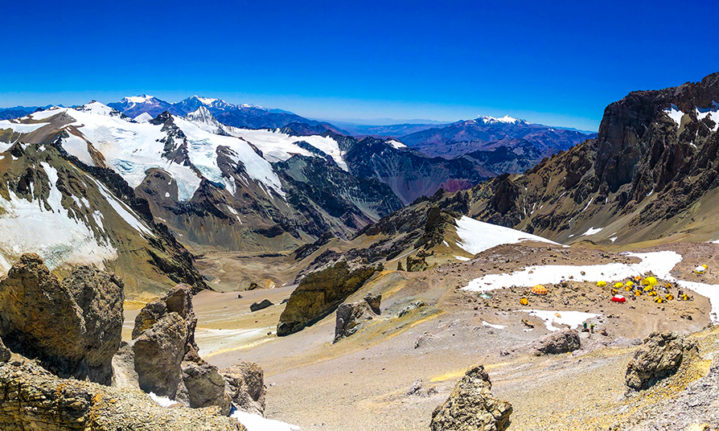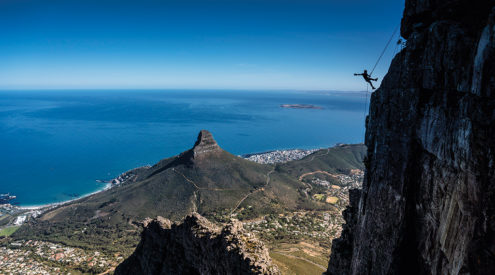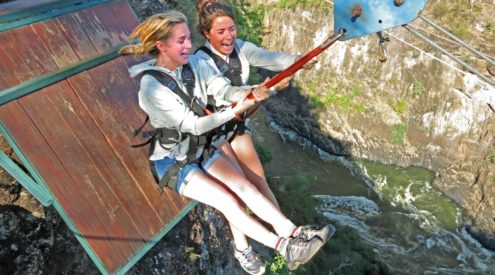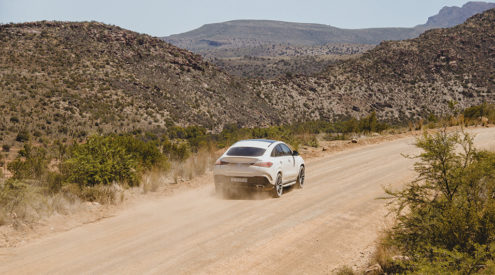The gruelling high altitude, demanding gains in elevation, heavy loads and harsh, unpredictable weather conditions make climbing Aconcagua a true mental and physical test.
A formidable mountain, it scrapes the belly of the sky at 6,962m. Aconcagua is the tallest peak in the Southern and Western Hemispheres and one of the infamous seven summits (highest mountains on each continent), the second highest after Mount Everest. With oxygen levels 60% lower than at sea level, every step you take is a battle. Aconcagua is without a doubt a fierce mountain and not to be underestimated. High-altitude mountaineer Remy Kloos gives us the lowdown on getting to the top.
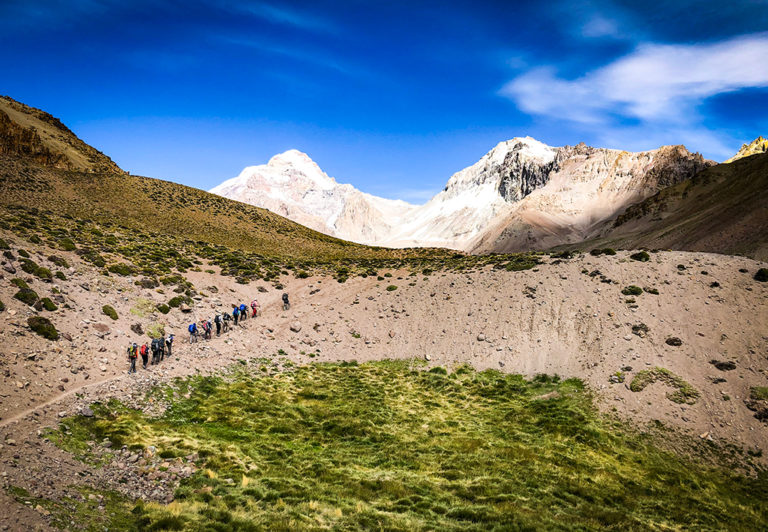
Climbing the Seven Summits team approaching base camp with Aconcagua in the background. Image credit: Remy Kloos
Located in the Andes in Argentina, the nearest town that you can fly into is Mendoza. A lively city known for its wine, it also attracts many adventure travellers. When deciding to climb Aconcagua, you can choose between the ‘Normal’ route, the more technically challenging ‘Polish Glacier’ route or the quieter, more beautiful, longer ‘360 Polish Traverse’. I undertook the latter, although 90% of people go with the easier, more direct ‘Normal’ route.
All routes include two nights in Mendoza before your climb and a few nights after, one night in Penitentes prior to your ascent, and a few extra contingency days to allow for bad weather on the mountain. Whichever route you choose, you will spend at least 14-18 nights camping on the mountain, making the round trip in about three weeks.
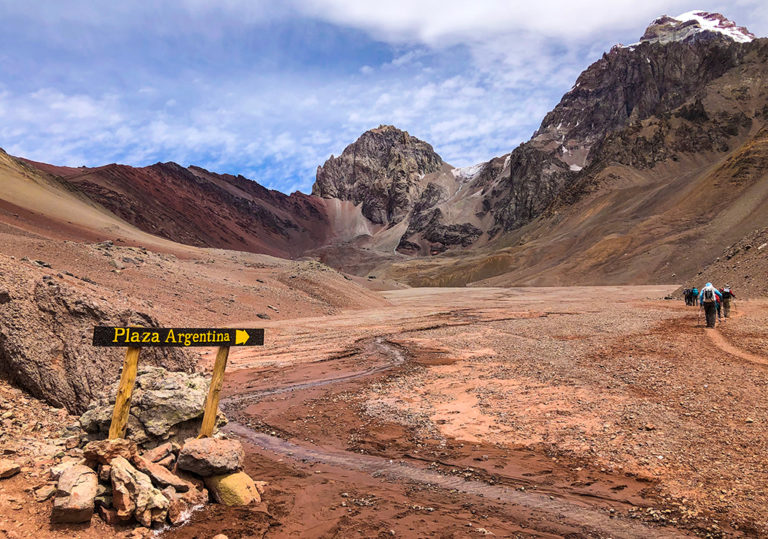
Base camp along the Polish Traverse at 4,000m, Plaza Argentina. Image credit: Remy Kloos
It goes without saying that you want to have as much fun as possible on your expedition to tackle the highest mountain outside of the Himalayas. Preparing for such an undertaking requires adequate training, commitment and a lot of steadfastness and grit. The mental stamina required is arguably the biggest challenge – so to prepare for this, get to know yourself, analyse and recognise your motivations, your strengths, limitations, and weaknesses. Being able to persevere through the toughest conditions on the mountain is essential, therefore getting crystal clear on your ‘why’ is extremely important.
Your chances of reaching the summit are substantially improved the more exposure you have had to high altitude in the past, for example if you have already climbed Kilimanjaro, or summited one of the peaks in Nepal. The value of previous experience can’t be underestimated!
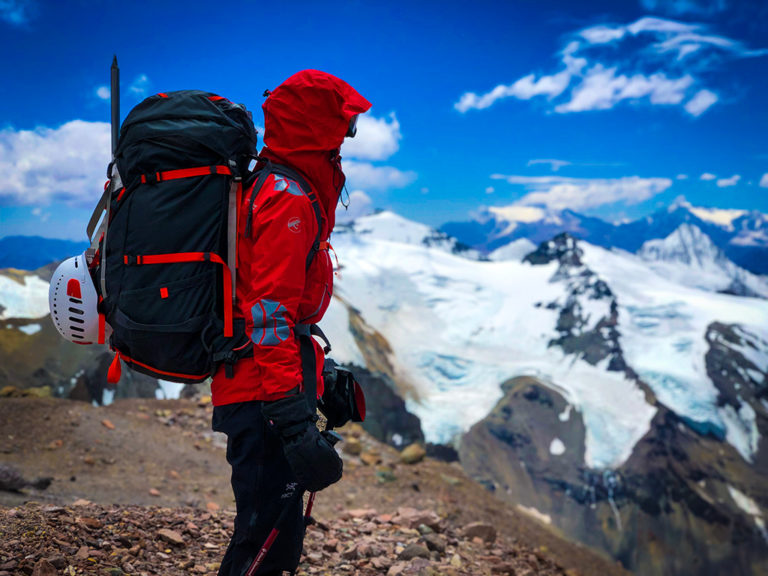
Approaching camp 2 at 5,500m carrying a heavy load. Image credit: Remy Kloos
My piece of advice for South African climbers who have their heart set on summiting Aconcagua is to use Kilimanjaro as training. I often get asked how Aconcagua compares to Kilimanjaro. For starters, they are both extremely beautiful and unique mountains, however, the climbing experiences and difficulty levels vary immensely. The estimated success rate for Aconcagua is about 40%, compared to Kilimanjaro’s 90%.

Climbing to camp 3, with a view overlooking camp 2. Image credit: Remy Kloos
The physical preparation required for the expedition is extremely demanding, you’ll need to build up a high level of strength and endurance, a high degree of self-care and strong cardiovascular conditioning. Assuming you are in good health and injury-free, I recommend focusing on the below. A mix of all these training exercises will ensure you are ready for the Aconcagua:
• Cardiovascular training – including both aerobic and anaerobic workouts without weight on your back
• Strength training – for the lower body and core
• Flexibility training – yoga formed a vital part of my preparation
• Climbing conditioning – heavy loaded packs, uphill hiking and walking (you need to get used to carrying 20-25kg loads).
It is vital that you allow yourself enough time to train for Aconcagua, as if you rush the training process you’re more likely to experience some sort of injury. Most people allow for four-six months of focused training. During this period, you will need to progressively increase your hiking distance, elevation gain and time to safely and effectively build your climbing-specific conditioning. Be consistent and stay committed and determined – the result will pay off many times over.
To add to the above, nourishment and hydration are of upmost importance during your expedition. Ensuring that you consume enough water will help combat the adverse effects of altitude, and I recommend drinking at least three litres per day. Make sure you eat foods rich in carbohydrates and pack a variety of your favourite sweet and salty snacks. I also always add a recovery powder to my water to help restore my electrolyte levels. On Summit Day, you can burn up to 10,000 calories! So, eat up and stay hydrated, even when the high altitude has starved you of your appetite.

Celebrating on the summit of Aconcagua at 6,962m. Image credit: Remy Kloos
At the end of the day, you can train and prepare as much as possible, but it’s teamwork that counts on the mountain. I feel honoured and privileged to have climbed with such a diverse mix of talented, kind and strong mountaineers that represent six continents. I climbed with a guiding company called Climbing the Seven Summits. Mike Hamill (owner and lead guide) embodied all the great characteristics of a professional mountain guide: experienced, calm, controlled, thoughtful, and always willing to teach.

Two-day descent via the Normal route. The colours and texture of the Andes were hypnotic. Image credit: Remy Kloos
Deciding to tackle a mighty peak like Aconcagua will require you to get through some seriously tough preparation, but make sure you also bring high amounts of passion into all aspects of your training, be it mental or physical. Coupled with this fiery passion, a fun and positive attitude is paramount, because at the end of the day it is not solely getting to the summit that’s the most important or the definition of victory. Having fun on the mountain, laughing with your teammates and fellow mountaineers, embracing comrades wholeheartedly – these are what really define a successful expedition. And finally, always remember to thank the mountain after you leave – she was kind enough to allow you to explore her home, after all.
About Remy Kloos
My passion for high-altitude mountaineering began about three years ago. In a search to gain some perspective in my life, I made the bold decision to climb the highest mountain in Africa, Kilimanjaro. Standing on the Roof of Africa, filled with energy, was the moment I realised my true power and what I was capable of. Since then I have climbed three of the seven summits and intend on summiting the remaining four by the end of 2021. Mountains are my home, they bring me hope and they fuel me with a deep and powerful sense of belonging.
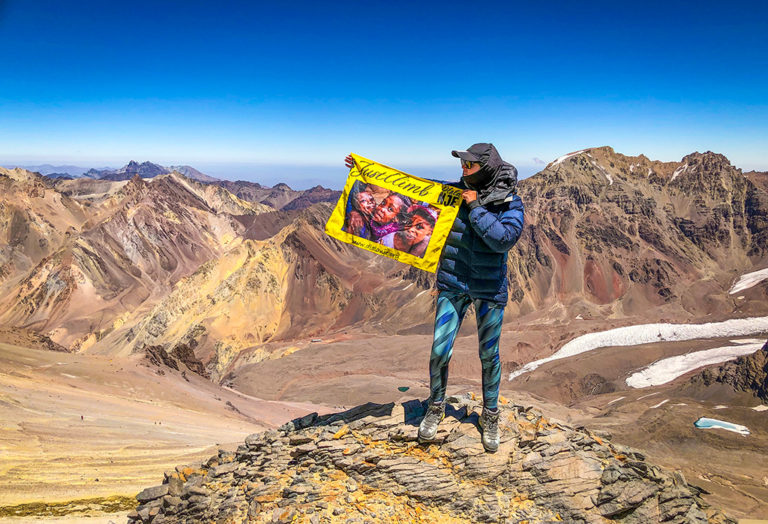
Connecting passion with purpose, Remy raises funds for Dlala Nje Foundation when going on expeditions. Image credit: Remy Kloos
Connecting passion with purpose is what creates meaning and fulfillment in my life. With this is mind, I launched the #JustClimb initiative in 2018 when I went to Russia to summit the highest mountain in Europe with the intention to raise funds for the Dlala Nje Foundation, which is based in Hillbrow, Johannesburg. To date I have raised over R250,000 and all of the proceeds have gone towards the expansion and renovation of Dlala Nje’s children’s community centre. As I continue to summit mountains, I want to motivate our youth to take their dreams to extraordinary heights and to encourage them to unlock their inner warriors so that they can tackle their own mountains in life.
Text and images: Remy Kloos









